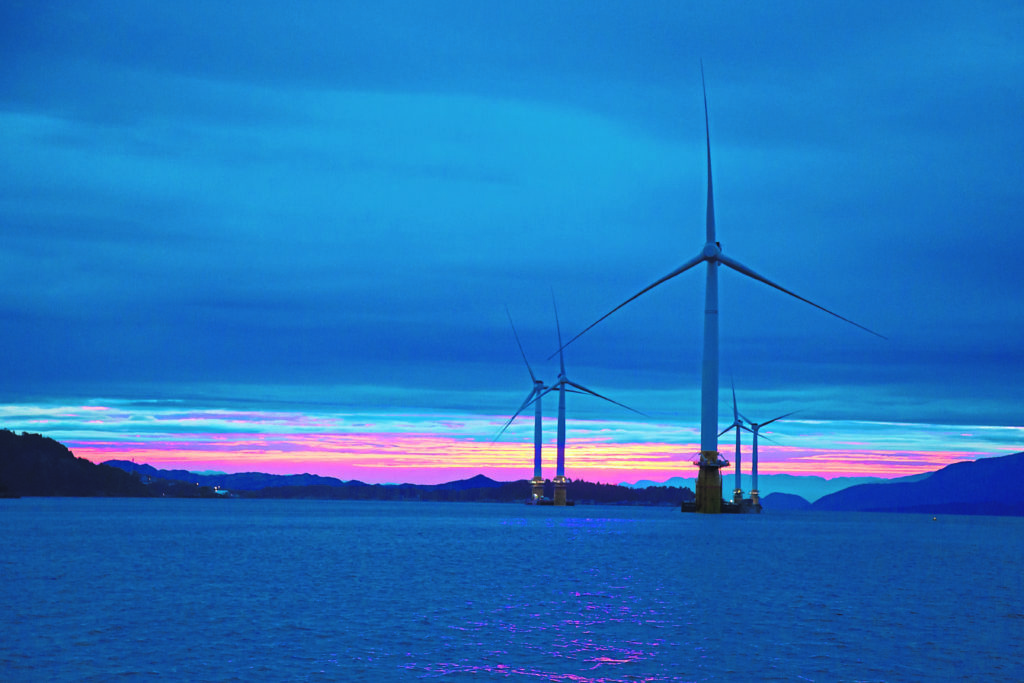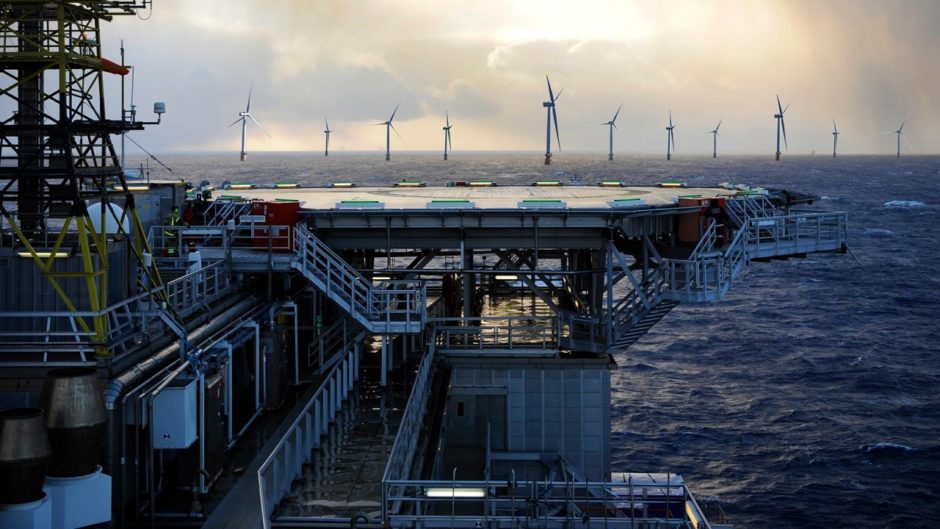
A boss at Equinor has said the firm is hopeful of bringing floating offshore wind costs in line with those of bottom-fixed by the end of the decade.
Matei Negrescu, the Norwegian energy giant’s head of area development for the North Sea, said the key will be ramping up the deployment of projects at scale in the coming years.
Equinor has also forecasted that floating wind could top 100 gigawatts (GW) of installed capacity globally by 2050.
Offshore wind industry experts have long stressed the need to make the fledgling technology more financially competitive.
Equinor has been one of the main drivers of floating wind in recent years, with Mr Negrescu describing technological development as being part of the “company’s DNA”.
In 2017, its five-turbine Hywind Scotland project, around 15 miles off the coast of Peterhead, started production, becoming the world’s first commercial floating offshore wind farm.
The North Sea development paved the way for Hywind Tampen, which is due to be the world’s first floating wind farm to power offshore oil and gas platforms when it becomes operational in 2022.
The 88 megawatt (MW) project will supply energy to the Snorre and Gullfaks fields, with Equinor treating it as a “test bed” for future advances.
Speaking at an Energy Industries Council, Mr Negrescu called Hywind Tampen “emblematic” of Equinor’s drive to diversify.
He said: “It’s thanks to decades of oil and gas experience that we’ve been able to pioneer new renewable energy technologies such as floating wind.
“Now, the development of those leading capabilities is helping us to develop into a broad energy company.
“Between Hywind Demo, the first project in 2009, and Hywind Scotland in 2017 we took down the capex per MW by 70%. The ambition for Hywind Tampen is to further reduce that by more than 40%.
“Ultimately, by scaling up projects to the hundreds of MWs and eventually GWs, we think we can have floating wind costs match those of bottom-fixed by around 2030.
“This is what will be key in enabling the emergence of this new floating industry, which we think could contribute upwards of 100GW of capacity by 2050.”
Mr Negrescu also described the North Sea as the “perfect place” to deploy floating offshore wind going forward.
Down the coast from Hywind Scotland, the Kincardine offshore floating wind farm, which is poised to take over as the world’s largest, is currently entering the final stages of development.
The first of five turbines for the project is expected on location in the coming weeks.
Mr Negrescu said: “Floating wind is going to be key for the world’s energy transition because it allows us to tap into deeper waters, as well as stronger and steadier winds.
“By doing that it opens up a much larger resource potential. According to our estimates, around 80% of the world’s offshore wind potential will require floating solutions.
“Our main priority now is to continue to lower the costs through project experience, development at scale, competitive value chains and innovation.
“It’s a very exciting technology for the North Sea – it was born here and we believe that it will continue to be a perfect place to deploy floating wind at scale going forward.”
Recommended for you


 © Equinor
© Equinor